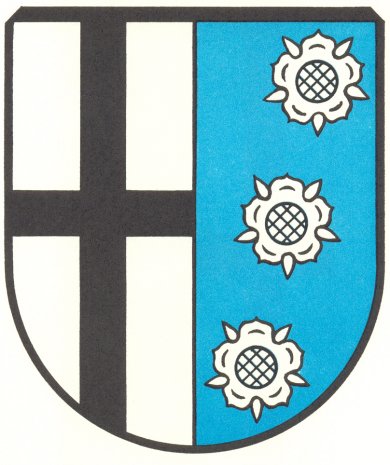Rumeln-Kaldenhausen: Difference between revisions
Jump to navigation
Jump to search
Knorrepoes (talk | contribs) m (Text replace - "|width="15%"|50 px|right |}" to "|width="15%"|50 px|right |}<seo title="Wappen, Gemeindewappen" />") |
Knorrepoes (talk | contribs) m (Text replace - "[[Literature" to "{{media}} [[Literature") |
||
| Line 19: | Line 19: | ||
Rumeln and Kaldenhausen merged in 1935. The black cross of the [[Köln (State)|State of Köln]] symbolises Kaldenhausen as the city was a longtime possession of the bishops of Köln. The three roses symbolise Rumeln, and are taken from the arms of the Lords and estate of Friemersheim, to which the village belonged. | Rumeln and Kaldenhausen merged in 1935. The black cross of the [[Köln (State)|State of Köln]] symbolises Kaldenhausen as the city was a longtime possession of the bishops of Köln. The three roses symbolise Rumeln, and are taken from the arms of the Lords and estate of Friemersheim, to which the village belonged. | ||
{{media}} | |||
[[Literature]] : Background and image provided by Joachim Beeck | [[Literature]] : Background and image provided by Joachim Beeck | ||
Revision as of 04:44, 9 July 2014
| Heraldry of the World Civic heraldry of Germany - Deutsche Wappen (Gemeindewappen/Kreiswappen) |
RUMELN-KALDENHAUSEN
State : Nordrhein-Westfalen
District (Kreis) : Duisburg (until 1974 Moers)
Additions : 1935 Kaldenhausen, Rumeln
Incorporated into : 1974 Duisburg
Origin/meaning
The arms are officially granted on January 28, 1958.
Rumeln and Kaldenhausen merged in 1935. The black cross of the State of Köln symbolises Kaldenhausen as the city was a longtime possession of the bishops of Köln. The three roses symbolise Rumeln, and are taken from the arms of the Lords and estate of Friemersheim, to which the village belonged.
Contact and Support
Partners:
Your logo here ?
Contact us
© since 1995, Heraldry of the World, Ralf Hartemink 
Index of the site
Literature : Background and image provided by Joachim Beeck











